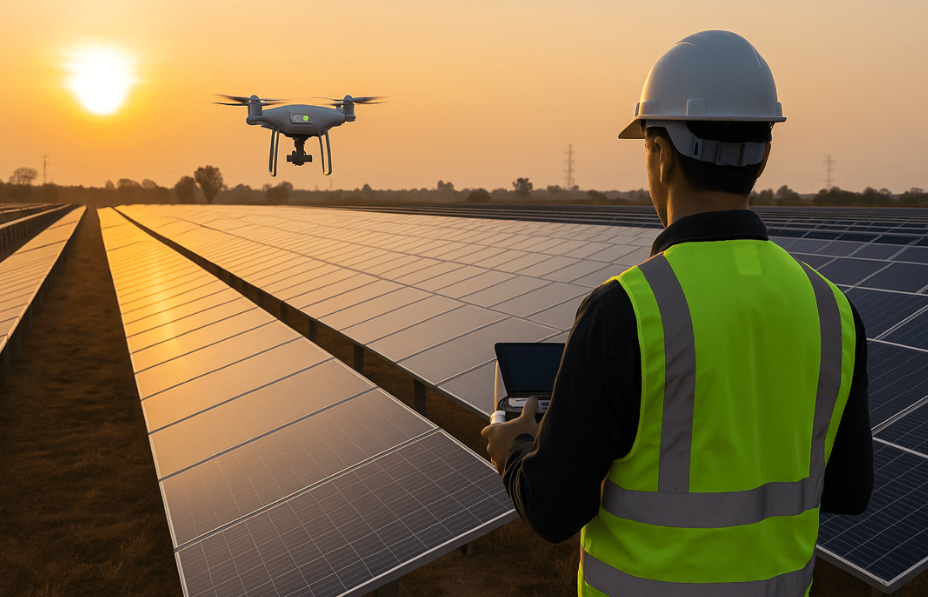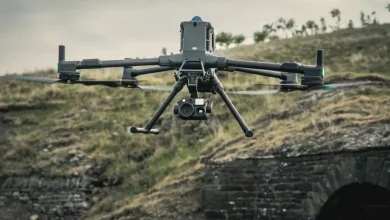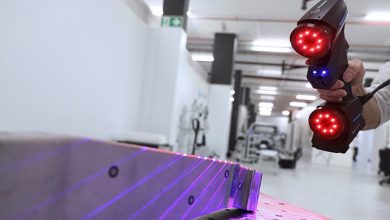Can Automation Improve Solar Site Audits

Can Automation Improve Solar Site Audits?
Yes, automation can significantly improve solar site audits. By leveraging advanced technologies like drones, AI, and IoT devices, you can enhance accuracy, efficiency, and safety in the audit process.
These automated solutions offer faster data collection, more precise measurements, and reduced human error compared to traditional manual methods.
Solar site audits face challenges such as time-consuming manual inspections, safety risks, and potential inaccuracies. This article explores how automation addresses these issues and revolutionizes the solar audit landscape.
We’ll cover the following key aspects of automated solar site audits:
✔️ Core technologies driving automation
✔️ Key benefits of automated approaches
✔️ Implementation strategies and best practices
Let’s explore how automation is transforming solar site audits and helping you optimize your solar energy projects.
Introduction To Automation In Solar Site Audits
Understanding Solar Site Audit Requirements
Solar site audits involve assessing various elements crucial for successful energy projects. These assessments cover factors like shading analysis, roof condition, electrical systems, and structural integrity. Accurate evaluations ensure optimal panel placement and system performance.
Thorough audits help identify potential issues early, reducing risks and maximizing energy production.
Defining Automation And Its Role
Automation in solar site audits refers to using advanced technologies to streamline and enhance the assessment process. This approach incorporates drones, robots, tailored FSM and AI-powered software to gather and analyze data.
By leveraging these tools, companies can improve accuracy, speed up inspections, and reduce human error in the audit process.
Comparing Traditional Vs. Automated Approaches
Traditional solar site audits rely heavily on manual measurements and visual inspections. This method often requires technicians to physically access rooftops and other potentially hazardous areas. In contrast, automated approaches utilize drones and specialized sensors to collect data remotely.
This shift significantly reduces safety risks and increases efficiency in data collection and analysis.
Early Adoption And Industry Trends
The solar industry is increasingly embracing automation for site audits. Forward-thinking companies have reported substantial time and cost savings through these advanced methods. For example, some businesses have cut audit times by up to 50% using drone technology.
This trend is expected to continue as more firms recognize the benefits of automated solar site assessments.
Key Benefits Of Automated Solar Site Audits
Enhanced Data Accuracy And Precision
Automation significantly improves data accuracy and precision in solar site audits. By using advanced technologies, you can obtain more reliable information compared to traditional manual methods.
For instance, drones equipped with high-resolution cameras and sensors can capture detailed images and measurements of solar panels, providing a level of accuracy that surpasses human capabilities.
These automated systems can detect minute defects or irregularities that might go unnoticed during manual inspections. They can also collect data consistently across large areas, eliminating human error and fatigue factors. This enhanced accuracy allows for better decision-making and more effective maintenance strategies.
Increased Efficiency And Speed
Automation dramatically speeds up the solar site audit process. AI-powered drones can cover vast areas quickly, reducing the time required for inspections. This increased efficiency translates to significant cost savings in terms of labor and resources.
Automated systems can process and analyze data in real-time, providing immediate insights and allowing for faster decision-making. They can also perform repetitive tasks without breaks, further accelerating the audit process.
By streamlining these operations, you can complete audits more frequently, ensuring your solar installations remain in optimal condition.
Improved Safety Protocols
Automation enhances safety during solar site audits by minimizing human exposure to potential hazards. Robots and drones can access dangerous or hard-to-reach areas, such as steep rooftops or unstable structures, without putting personnel at risk.
These automated systems can operate in extreme weather conditions or during nighttime hours when human inspections might be unsafe. By reducing the need for manual inspections in hazardous environments, you can significantly lower the risk of accidents and injuries to your workforce.
Reduced Operational Costs
Implementing automated systems for solar site audits can lead to substantial cost reductions. By decreasing the need for manual labor, you can lower your staffing expenses and allocate resources more efficiently.
Automated audits can identify issues early, preventing costly breakdowns and extending the lifespan of your solar equipment. This proactive approach to maintenance can result in significant long-term savings.
Additionally, the increased speed and efficiency of automated audits mean you can inspect more sites in less time, further reducing operational costs.
Predictive Maintenance Advantages
Automation enables predictive maintenance in solar site audits, allowing you to anticipate and address potential issues before they escalate. By continuously monitoring system performance and analyzing data trends, automated systems can forecast equipment failures and degradation.
This predictive approach helps you schedule maintenance activities more effectively, reducing downtime and extending the life of your solar installations. You can prioritize repairs based on actual needs rather than fixed schedules, optimizing your maintenance resources and improving overall system reliability.
Core Technologies Behind Automation
Role Of Drones In Solar Inspections
Drones have become invaluable tools in automating solar inspections. These flying devices offer a level of precision and efficiency that surpasses traditional human-led audits. By utilizing advanced cameras and sensors, drones can capture high-resolution images and thermal data of solar panels from various angles.
The aerial perspective provided by drones allows for comprehensive coverage of large solar installations in a fraction of the time it would take a ground team. This speed and accuracy translate into more frequent and thorough inspections, helping to identify potential issues before they escalate.
One of the key advantages of drone technology in solar audits is its ability to detect minute defects that might go unnoticed by the human eye. Thermal imaging capabilities enable drones to pinpoint hotspots, cracks, or malfunctioning cells with remarkable accuracy.
By incorporating drones into your solar inspection process, you can expect improved safety for your audit teams, reduced operational costs, and enhanced data quality for informed decision-making.
Robotics For Hazardous Area Access
Robotic systems play a crucial role in accessing hazardous or hard-to-reach areas during solar site audits. These sophisticated machines can navigate through tight spaces, climb steep surfaces, and operate in environments that would be unsafe for human inspectors.
By deploying robots, you can gather critical information from areas that were previously inaccessible or too dangerous to inspect manually. This capability is particularly valuable for large-scale solar installations with complex structures or those located in challenging terrains.
Robots equipped with specialized sensors and cameras can perform detailed examinations of solar panel undersides, cable connections, and support structures. This thorough inspection helps identify potential issues such as corrosion, loose connections, or structural weaknesses that could impact system performance.
The use of robotics in hazardous area inspections not only enhances safety but also provides consistent and objective data collection. This reliability ensures that your audit results are accurate and actionable, leading to more effective maintenance strategies.
AI And Predictive Analytics
Artificial Intelligence (AI) and predictive analytics are revolutionizing the way solar site audits are conducted and interpreted. These advanced technologies analyze vast amounts of data collected during inspections to identify patterns, predict potential failures, and optimize maintenance schedules.
By leveraging AI algorithms, you can process and interpret complex data sets from multiple sources, including drone imagery, robotic inspections, and historical performance data. This comprehensive analysis helps uncover subtle trends and anomalies that might escape human observation.
Predictive analytics takes this a step further by forecasting future system behavior based on current and historical data. This capability allows you to anticipate potential issues before they occur, enabling proactive maintenance and minimizing downtime.
Implementing AI and predictive analytics in your solar site audits can lead to more informed decision-making, optimized resource allocation, and improved overall system performance.
These technologies empower you to shift from reactive to preventive maintenance strategies, ultimately extending the lifespan of your solar assets.
Real-Time Data Processing Systems
Real-time data processing systems are essential components of modern automated solar site audits. These systems collect, analyze, and interpret data as it’s being generated, providing immediate insights and enabling rapid response to any issues detected.
By implementing real-time processing, you gain the ability to monitor your solar installation’s performance continuously. This constant vigilance allows for quick identification of anomalies or sudden changes in system output, triggering immediate alerts for further investigation.
The speed of real-time analysis is particularly valuable during large-scale audits, where vast amounts of data are generated simultaneously. Instead of waiting for post-inspection analysis, you can make on-the-spot decisions and adjustments, maximizing the efficiency of your audit process.
Moreover, real-time data processing facilitates dynamic optimization of your solar system. By continuously analyzing performance metrics, these systems can suggest immediate adjustments to improve energy yield and overall system efficiency.
IoT And Connected Devices
The Internet of Things (IoT) and connected devices form a crucial network that enhances the automation of solar site audits. This interconnected ecosystem of sensors, meters, and monitoring equipment provides a constant stream of data about your solar installation’s performance and environmental conditions.
By deploying IoT devices across your solar site, you create a comprehensive monitoring system that operates 24/7. These devices can measure factors such as energy output, panel temperature, weather conditions, and grid stability, providing a holistic view of your system’s health.
Connected devices enable remote monitoring and control, allowing you to manage your solar installation from anywhere. This capability is particularly useful for large-scale or geographically dispersed solar farms, where on-site presence may not always be feasible.
The integration of IoT in solar audits also facilitates predictive maintenance. By continuously monitoring system parameters, these devices can detect early signs of degradation or malfunction, triggering alerts for preventive action. This proactive approach helps minimize downtime and extend the lifespan of your solar assets.
Implementation Strategies And Best Practices
Assessing Costs And ROI
When considering automation for solar site audits, it’s crucial to evaluate the costs and potential return on investment. Start by identifying all expenses associated with implementing new technologies, including hardware, software, training, and maintenance.
Compare these costs to the expected benefits, such as increased efficiency, reduced labor hours, and improved accuracy.
To calculate ROI, consider factors like time savings, error reduction, and enhanced data quality. Quantify these benefits in monetary terms and compare them to the initial investment and ongoing costs. Remember that some benefits may be intangible, such as improved safety or customer satisfaction.
Use financial metrics like payback period, net present value, and internal rate of return to assess the long-term value of your automation investment. Keep in mind that ROI may vary depending on the scale of your operations and the specific technologies you choose to implement.
Training And Skill Development
Effective training is essential for successful implementation of automated solar site audit systems. Begin by assessing your team’s current skills and identifying knowledge gaps. Develop a comprehensive training program that covers both technical aspects of the new technologies and their practical application in the field.
Consider a mix of learning methods, including hands-on workshops, online courses, and on-the-job training. Encourage continuous learning by providing regular updates and refresher courses as technologies evolve. Foster a culture of knowledge sharing within your team, where experienced members can mentor newcomers.
Invest in developing specialized skills such as data analysis and interpretation, as these will become increasingly valuable with automation. By prioritizing training and skill development, you’ll ensure your team can fully leverage the benefits of automated solar site audits.
Integrating With Existing Systems
Successful integration of automation technologies with your current systems is key to maximizing efficiency. Start by mapping out your existing workflows and identifying points where new technologies can seamlessly fit in.
Ensure compatibility between new and legacy systems by choosing solutions with appropriate APIs and data exchange capabilities.
Address potential challenges early in the integration process. These may include data format inconsistencies, software conflicts, or resistance from staff accustomed to old methods. Work closely with your IT department and technology vendors to develop solutions tailored to your specific needs.
Implement the integration in phases, starting with a pilot project to identify and resolve issues before full-scale deployment. This approach allows for fine-tuning and minimizes disruptions to your operations. Regularly review and optimize the integrated system to ensure it continues to meet your evolving needs.
Data Management And Security Protocols
Proper data management and security are paramount in automated solar site audits. Establish clear protocols for data collection, storage, and access. Implement robust encryption methods to protect sensitive information during transmission and storage.
Create a comprehensive data backup strategy to prevent loss of critical information. This should include regular backups stored in secure, off-site locations. Implement access controls to ensure only authorized personnel can view or modify sensitive data.
Train your team on data security best practices, including the use of strong passwords, recognition of phishing attempts, and proper handling of confidential information. Regularly update your security measures to address emerging threats and comply with evolving data protection regulations.
Regulatory And Compliance Considerations
Staying compliant with regulations is crucial when implementing automation in solar site audits. Familiarize yourself with relevant local, state, and federal regulations governing solar installations and data management. These may include building codes, electrical standards, and privacy laws.
Develop a compliance checklist to ensure your automated processes meet all necessary requirements. This may involve obtaining certifications for your equipment and software, maintaining proper documentation, and adhering to specific data retention policies.
Stay informed about changes in regulations that may affect your operations. Consider joining industry associations or subscribing to regulatory updates to stay ahead of new requirements. By prioritizing compliance, you’ll avoid potential legal issues and build trust with clients and regulatory bodies.
Frequently Asked Questions on Automating Solar Site Audits
What Are The Initial Costs Of Implementing Automation?
Implementing automation for solar site audits involves upfront expenses that vary based on your specific needs. You’ll likely encounter costs for equipment like drones or robots, software licenses, and training for your team.
While these initial outlays may seem substantial, they often lead to long-term savings through increased efficiency and accuracy.
For instance, investing in a high-quality drone with thermal imaging capabilities could cost around $10,000, but it might save you thousands in labor costs and improve the precision of your audits significantly over time.
Are Drones Necessary For All Solar Site Audits?
Drones aren’t always essential for solar site audits, but they can be incredibly useful in certain scenarios. For large-scale solar farms or installations with difficult-to-access areas, drones provide a quick and safe way to gather comprehensive data.
However, for smaller residential installations or easily accessible commercial sites, traditional methods might suffice. Your decision should depend on factors like site size, complexity, and the level of detail required in your audit. Consider the specific needs of each project before determining whether drone technology is necessary.
How Does Predictive Analytics Improve Maintenance?
Predictive analytics transforms maintenance processes by leveraging data to anticipate potential issues before they occur. By analyzing patterns from past audits and ongoing monitoring, you can schedule maintenance proactively rather than reactively.
This approach helps prevent unexpected downtime and extends the lifespan of solar equipment. For example, if analytics show that certain panels consistently underperform during specific weather conditions, you can address the issue preemptively, avoiding costly repairs or replacements down the line.
What Safety Measures Do Robots Require?
When using robots for solar site audits, safety should be your top priority. Implement clear operational protocols, including designated safe zones for human workers and programmed boundaries for robot movement. Equip your robots with sensors to detect obstacles and avoid collisions.
Regular maintenance checks are crucial to ensure all safety features function correctly. Additionally, train your staff on proper robot interaction and emergency procedures. These measures not only protect your team but also safeguard the solar installation from potential damage during the audit process.





